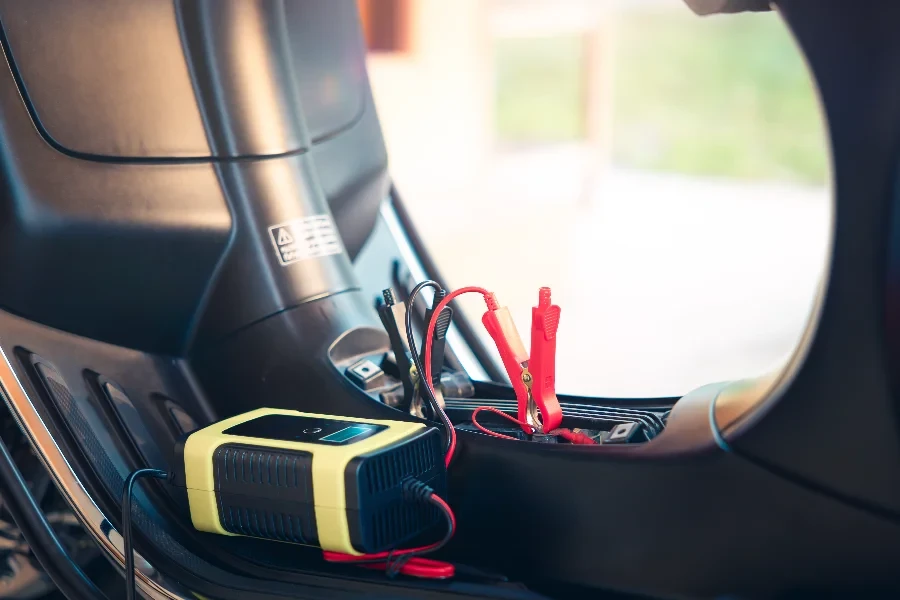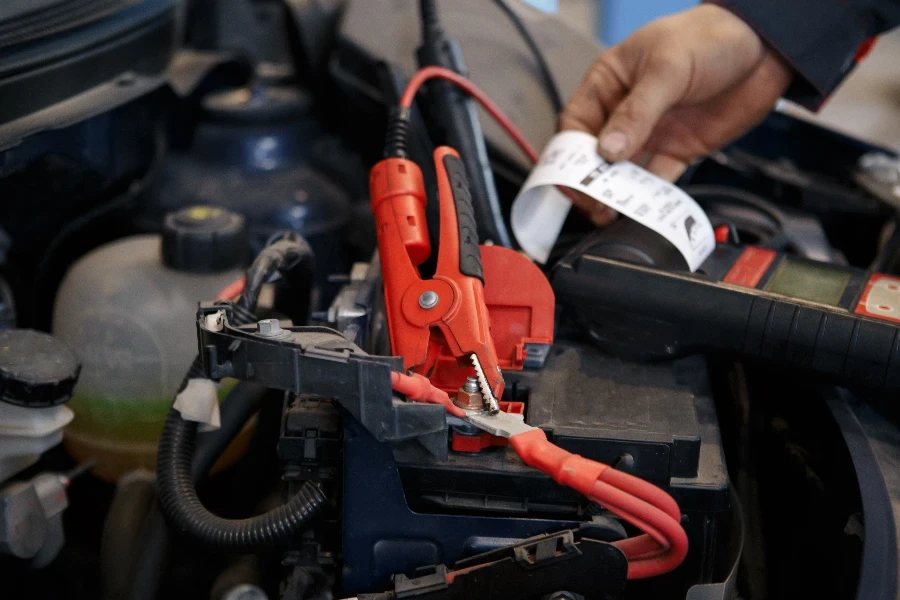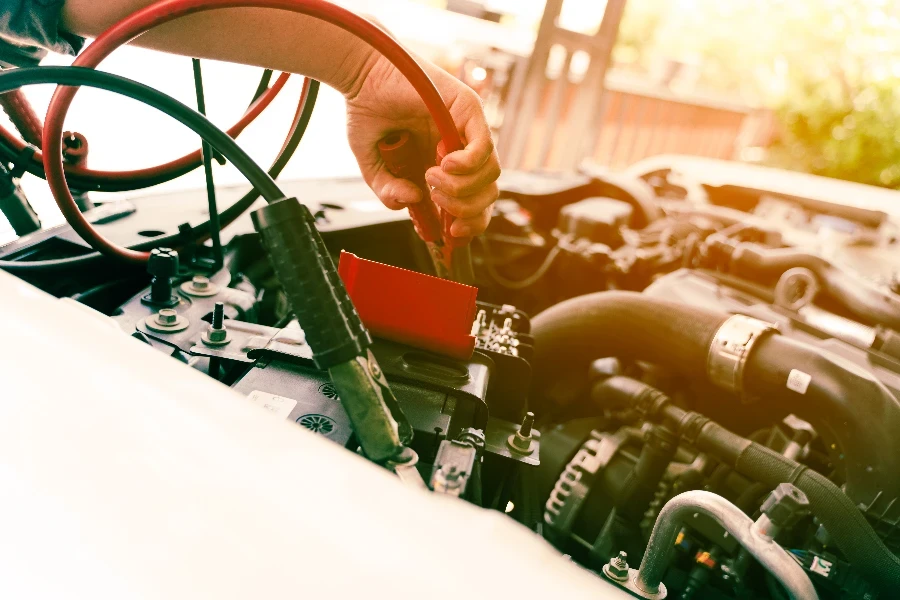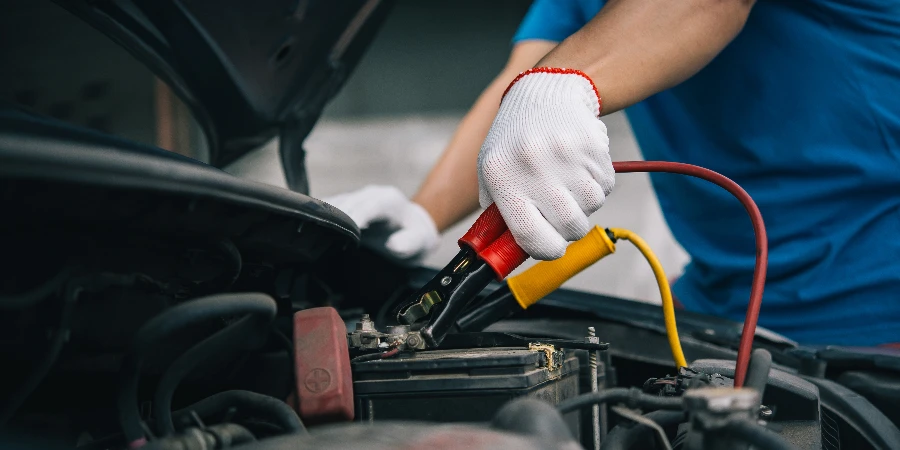A jump starter is an indispensable tool for any vehicle owner, providing a reliable solution for dead batteries. This article delves into what a jump starter is, its functions, and essential tips on selecting, maintaining, and replacing this crucial automotive accessory. Stay powered up and ready to go, no matter where your travels take you.
Table of Contents:
– What is a jump starter?
– What does a jump starter do?
– How to choose a jump starter
– How long do jump starters last?
– How to replace a jump starter
– How much are jump starters?
What is a jump starter?

A jump starter is a portable device that allows you to start a vehicle when the battery is too low to do it on its own. Unlike traditional jumper cables, which require another vehicle to provide the necessary power, a jump starter harnesses its own power source to give your car battery a boost. These devices are compact, easy to use, and a lifesaver in emergency situations. They come in various sizes and capacities, designed to suit different types of vehicles, from small cars to large trucks.
The core of a jump starter is its battery, which stores electrical energy that can be used when your vehicle’s battery is depleted. Modern jump starters often incorporate lithium-ion batteries, which offer high energy density, lightweight, and long shelf life. Besides jump-starting, many of these devices also feature USB ports to charge electronic devices, making them multifunctional gadgets for today’s digitally connected world.
Understanding the technology behind jump starters is crucial for any vehicle owner. The ability to deliver a high current for a short period allows these devices to crank up an engine, overcoming the dead battery hurdle. This function is facilitated by the internal circuitry designed to manage power flow safely and efficiently, ensuring your vehicle starts without damaging its electrical system.
What does a jump starter do?

A jump starter serves as an emergency power source for vehicles with a dead battery. When your car refuses to start due to battery issues, a jump starter steps in to provide the necessary power to crank the engine. This is achieved by transferring energy from the jump starter’s battery to your vehicle’s battery, giving it the boost needed to start the engine.
The process involves connecting the jump starter to your vehicle’s battery terminals with the provided clamps. Once securely connected, the device delivers a surge of power to the battery, enabling the vehicle’s engine to start. After the engine is running, it’s crucial to disconnect the jump starter and let the vehicle’s alternator recharge the battery.
Jump starters are not only about starting engines; they also serve as portable power banks for electronic devices. With built-in USB ports and sometimes even AC outlets, these devices can charge phones, tablets, and laptops, making them invaluable companions for road trips, camping, or any situation where traditional power sources are unavailable.
How to choose a jump starter

Choosing the right jump starter involves considering several factors to ensure it meets your vehicle’s needs. First, you must look at the peak amps and cranking amps ratings. Peak amps refer to the maximum current a jump starter can deliver momentarily, while cranking amps are the current it can provide at 0 degrees Fahrenheit. These ratings should match or exceed your vehicle’s requirements for starting the engine.
Battery type is another critical consideration. Lithium-ion batteries are preferred for their lightweight, compact size, and efficiency. However, for larger vehicles or in extremely cold environments, lead-acid batteries might be more suitable due to their higher cranking power and resilience in low temperatures.
Additional features can also sway your choice. Look for a jump starter with safety features like reverse polarity protection, overcharge protection, and short circuit protection. These ensure the device operates safely and does not damage your vehicle’s electrical system. Moreover, consider models with extra functionalities such as air compressors, LED lights, or portable charging options for electronic devices, which add value beyond just jump-starting your car.
How long do jump starters last?

The lifespan of a jump starter depends on its battery type, usage, and maintenance. Typically, a well-maintained jump starter can last between 3 to 5 years. Lithium-ion batteries, while efficient and compact, may have a shorter lifespan if frequently discharged and recharged. Conversely, lead-acid batteries, though bulkier, can last longer if properly maintained and kept charged.
Proper care involves regularly charging the jump starter, even when not in use, to keep the battery in optimal condition. Most manufacturers recommend charging the device every 3 to 6 months to prevent battery degradation. Additionally, storing the jump starter in a cool, dry place and avoiding extreme temperatures can significantly extend its life.
It’s also important to note that the number of jump starts a device can perform on a single charge varies. This depends on the capacity of the jump starter and the condition of the vehicle’s battery. Regularly using the device to its maximum capacity can wear it out faster, so understanding and adhering to its limitations is crucial for longevity.
How to replace a jump starter

Replacing a jump starter typically involves purchasing a new unit, as the internal batteries are not designed to be user-replaceable. When choosing a replacement, consider the lessons learned from your previous jump starter. Evaluate what worked well and what didn’t meet your expectations, such as battery life, power output, or additional features.
Before disposing of your old jump starter, check if it’s recyclable. Many components, especially the battery, can be recycled, reducing environmental impact. Ensure to follow local regulations and guidelines for disposing of electronic waste.
When setting up your new jump starter, charge it fully before its first use to ensure maximum efficiency. Familiarize yourself with its features and operation, and keep it maintained according to the manufacturer’s instructions to maximize its lifespan.
How much are jump starters?

The price of jump starters varies widely based on their power capacity, battery type, and additional features. Basic models can start as low as $50, offering essential jump-starting capabilities without extra functionalities. Mid-range options, typically between $100 and $200, usually provide higher power output, suitable for larger vehicles, and may include features like USB charging ports or LED lights.
High-end jump starters can cost upwards of $200 and are designed for heavy-duty use, featuring robust batteries, high cranking amps, and a suite of safety and convenience features. These models are ideal for those who require reliable performance in all conditions or need to jump-start larger engines.
When considering the cost, think about the value the jump starter brings in terms of convenience, safety, and peace of mind. Investing in a reliable model that meets your specific needs can save you from the hassle and expense of roadside assistance or towing services.
Conclusion
A jump starter is a vital tool for any vehicle owner, offering a dependable solution for dead batteries and more. Understanding what to look for when choosing a jump starter, how to maintain it, and when to replace it can ensure you’re always prepared for the unexpected. With the right jump starter in your vehicle, you’ll enjoy peace of mind knowing you’re ready to face battery issues head-on, wherever you may be.




